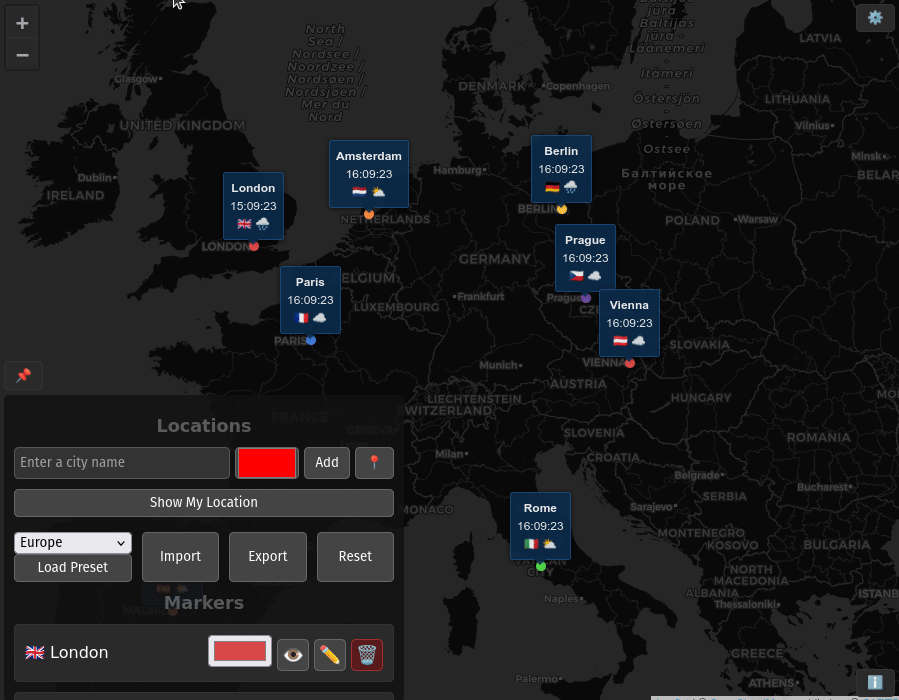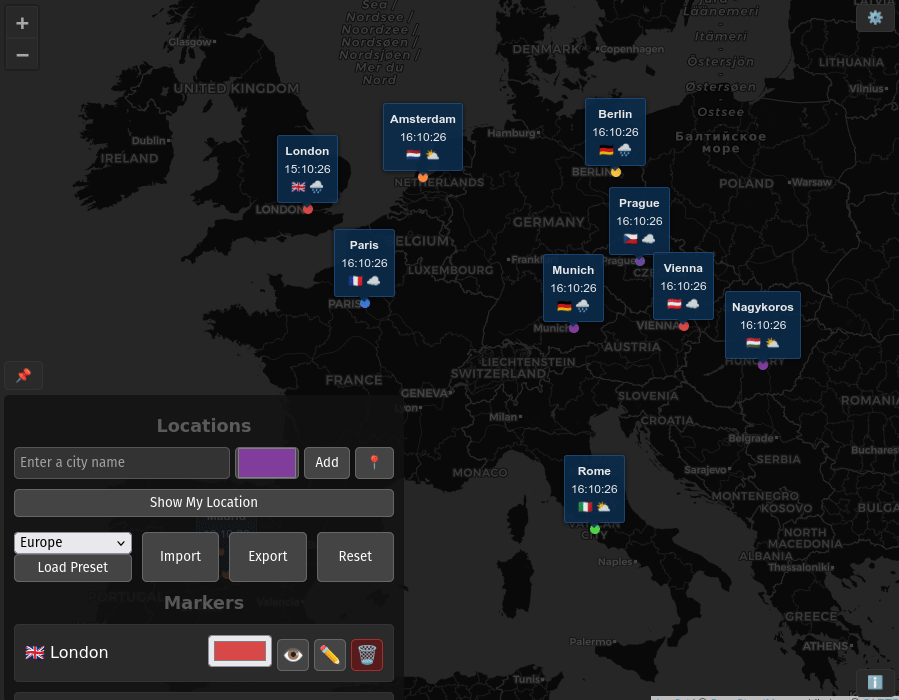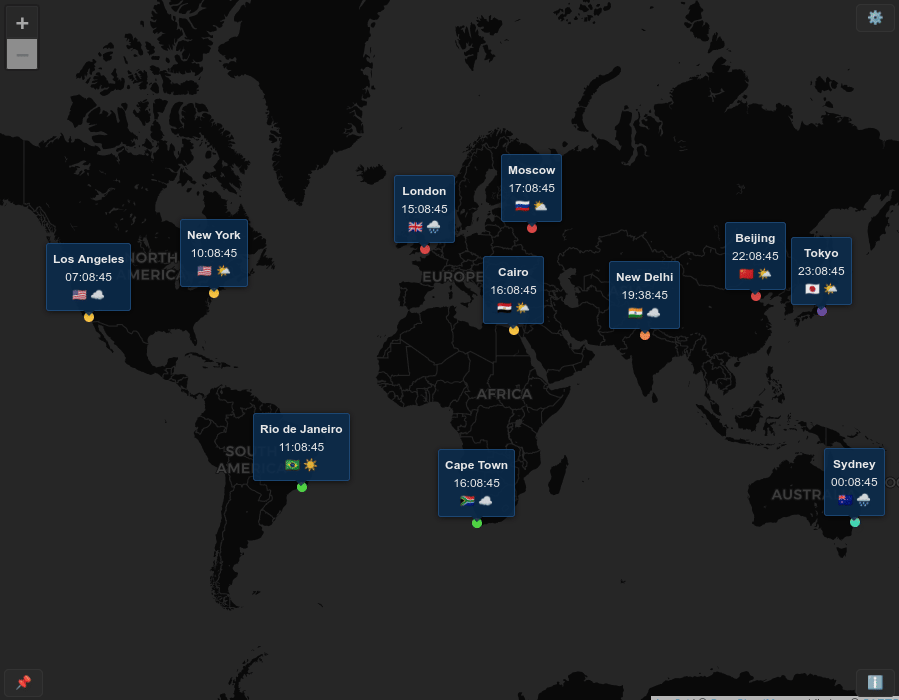I was recently unable to find a decent online world clock that would allow me to view multiple custom locations at a glance. With the release of Gemini CLI and a little experience with Javascript, I decided to create my own. It’s free to use and open source, so let’s explore.
Features
TimeSync provides a highly customizable and intuitive world clock map, whilst remaining as minimalistic as possible. Here are some of its key features:
 |
 |
 |
Experience with Gemini CLI
| ✅ | Reduced time to prototype | Building the initial map and marker system only took a few minutes and it worked well. |
| ❌ | Increased debugging time | Debugging took much longer, as I needed to familiarised myself with any LLM-generated code. |
| ✅ | Accelerated solution suggestions | Adding new features was also pretty speedy, as Gemini combines library/endpoint discovery with their implementation. |
| ❌ | No incidental findings | But this meant that I didn’t need to read resource docs, reducing my initial understanding of them. |
| ✅ | Bonus debugging | On top of established debugging tools, it was useful to ask things like “how could we improve this function?” |
| ❌ | Technical issues | Often Gemini would produced confused output, delete something major, or randomly freeze up. |
| ❌ | Lack of architectural awareness | More broadly, Gemini tended to prioritise the current request and forsake the wider code base. Generated code was rarely built with future expansion in mind. |
Overall, tools like Gemini CLI are great for rapid prototyping, akin to a wireframe, but must be followed up by manual development and deep dives. It’s a bit like asking a junior developer to build a prototype and then adopting (and refactoring) their implementation for productionisation.
